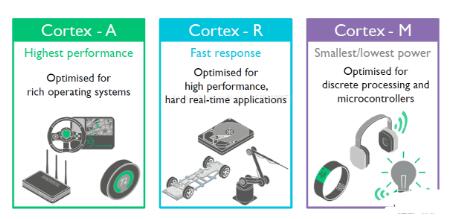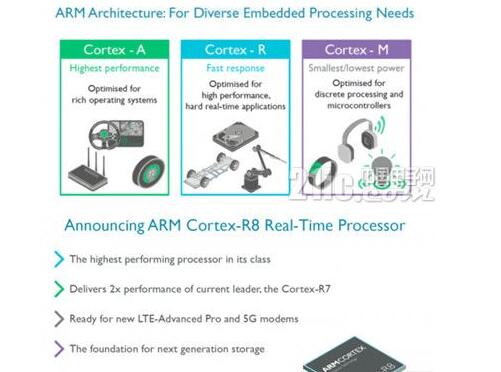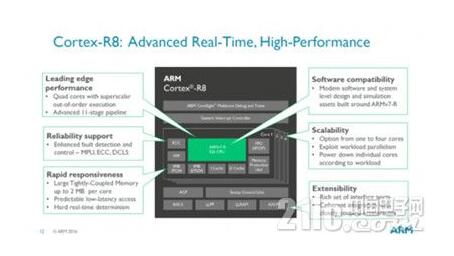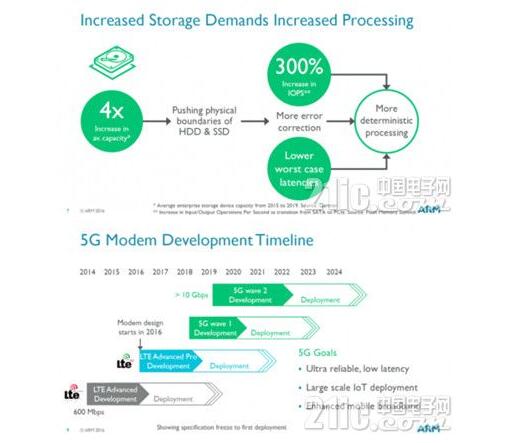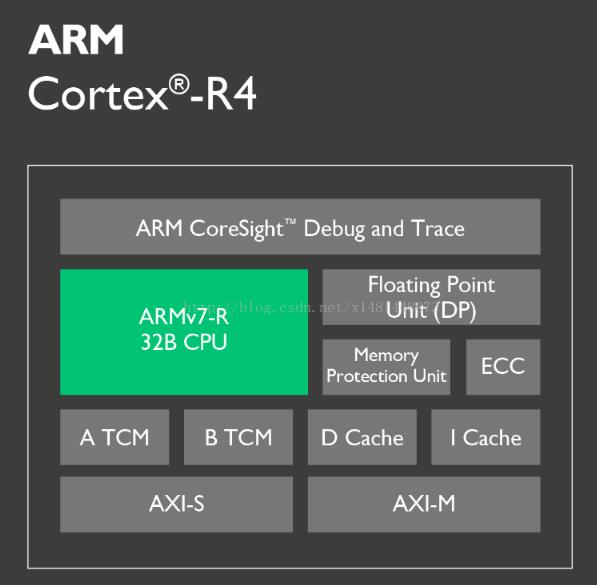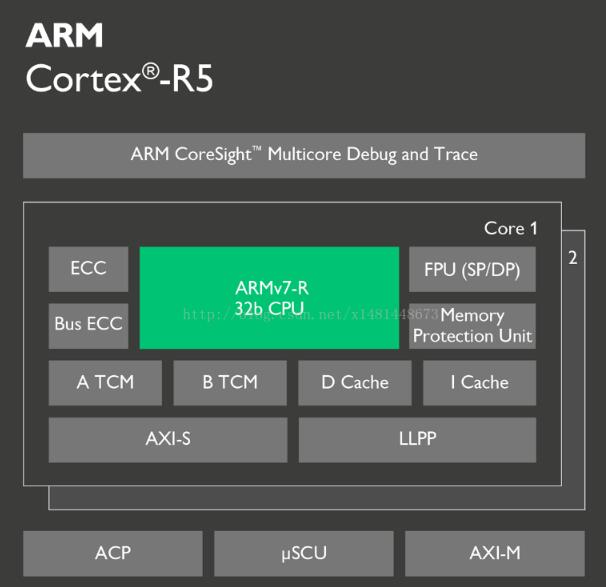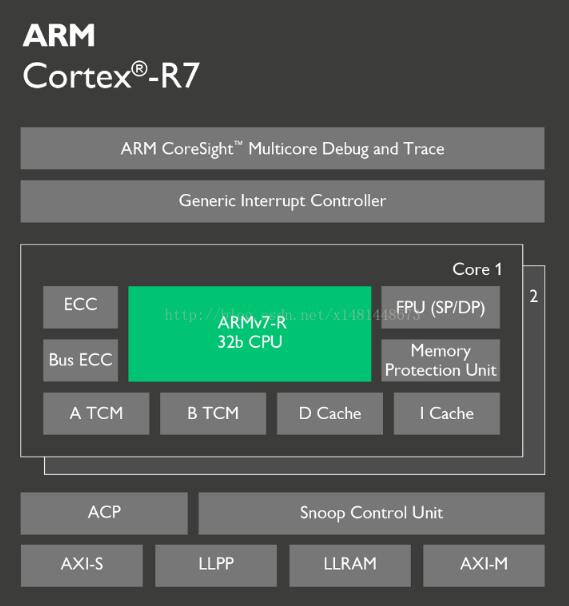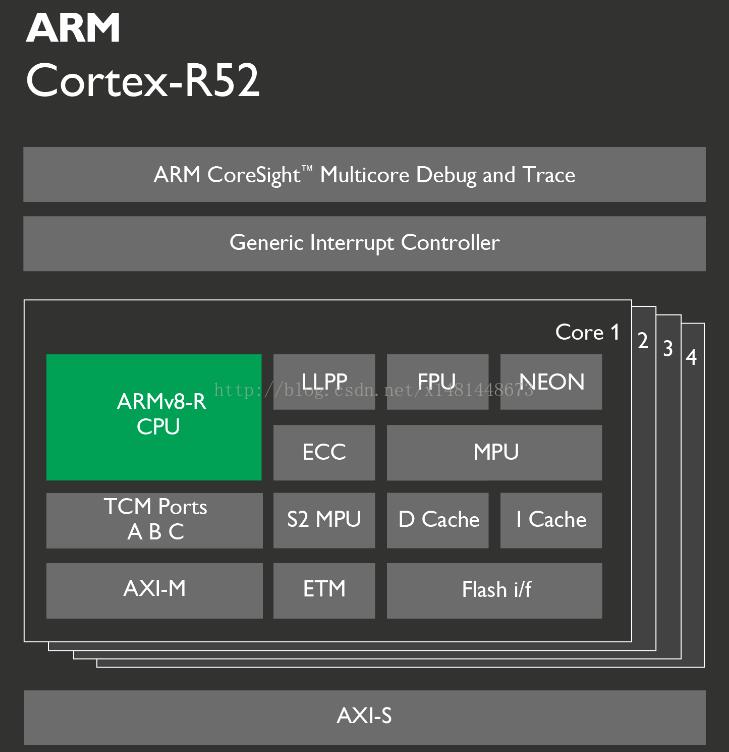Speaking of the ARM processor, everyone will certainly think of the Cortex-A series, but this is only one of the three high-performance applications processors of the people's three major product lines, as well as the very low-key Cortex-M series of microcontrollers, Cortex-R series Real-time processor. This article mainly talks about the Cortex-R series, the smallest ARM processor in the derivative product, which is also the least known. The Cortex-R processor targets high-performance real-time applications such as hard disk controllers (or solid-state drive controllers), network devices and printers in the enterprise, consumer electronics devices (such as Blu-ray players and media players), and automotive applications (such as Airbag, brake system and engine management). The Cortex-R series is similar in some respects to high-end microcontrollers (MCUs), but is aimed at systems that are larger than systems that typically use standard MCUs. In February 2016, ARM introduced the new real-time processor Cortex-R8. According to ARM, the Cortex-R series real-time processors are mainly used to provide high-performance computing solutions for embedded systems that require high reliability, high availability, high fault-tolerance, high maintenance, and real-time response. The Cortex-R8 architecture continues to feature the Cortex-R7. It is still an 11-order out-of-order pipeline, ARMv7-R instruction set, and backward compatible, but the Cortex-R8 supports up to four cores, which is double the previous generation. And each core can be operated asymmetrically, with its own power management, so it can be turned off individually to save power. Each core can also be paired with up to 2MB of low-latency tightly coupled buffer (TCM), including 1MB instructions, 1MB of data, and up to 8MB of processor. In contrast, the Cortex-R7 has a maximum of 128KB instruction/data cache per core. Cortex-R8 can be manufactured with different processes such as 28/16/14nm. Among them, the frequency up to 1.5GHz can be achieved under the 28nm HPM process, and the highest performance is 15000 Dhrystone MIPS, which is twice that of Cortex-R7 now, and the smallest core area can be To only 0.33 square millimeters. Cortex-R8 can be widely used in smart phones, tablet computers, car networking, Internet of things and other fields, especially to meet the 4G LTE-A, 4.5G LTE-A Pro, 5G communication baseband and large-capacity memory for low latency, high performance And energy-efficient requirements. One, Cortex-R4 Cortex-R4 is the first product in the Cortex-R series and is ideal for automotive applications. Cortex-R4 main frequency can be up to 600MHz (with 2.45DMIPS/MHz), with 8 pipelines, dual send, prefetch and branch prediction, and low-latency interrupt system, can interrupt multi-cycle operation and quickly enter the interrupt service routine . The Cortex-R4 can also be configured in a dual-core configuration with another Cortex-R4, which together form a redundant lock-step configuration with fail-detection logic, making it ideal for safety-critical systems. Second, Cortex-R5 For RCorex R5, which emphasizes functional safety, it can serve network and data storage applications very well. It extends the Cortex-R4's feature set to increase efficiency and reliability, and enhances reliability in real-time systems. Error management. One of these system functions is the Low-Latency Peripheral Port (LLPP), which enables fast peripheral reads and writes (without the need for read-modify-write operations on the entire port). The Cortex-R5 can also implement a "lock-step" dual-core system where the processor operates independently, each of which can execute its own program through its own "bus interface and interrupt." This dual-core implementation can build a very powerful and flexible real-time response system Third, Cortex-R7 The Cortex-R7 greatly expands the performance range of the R-series cores, with clock speeds in excess of 1 GHz and performance of 3.77 DMIPS/MHz. The 11-stage pipeline on the Cortex-R7 now features enhanced error management and improved branch prediction. There are also many different options for multicore configurations: lockstep, symmetric multiprocessing, and asymmetric multiprocessing. The Cortex-R7 also comes with a fully integrated universal interrupt controller (GIC) to support complex priority interrupt handling. However, it is worth noting that although the Cortex-R7 has high performance, it is not suitable for applications that run on feature-rich operating systems such as Linux and Android, and the Cortex-A series is more suitable for such applications. Fourth, Cortex-R52 As the latest Cortex-R series microprocessor, the Cortex-R52 is based on the improved ARMv8-R architecture and is considered to be an upgraded version of the previous Cortex-R5, but it differs from the Cortex-R7\R8 in applications. The former is set in the car. In the field of automation in industry, industry and healthcare, the latter has strengthened its storage low latency and Modem, focusing on networking, networking, and 4/5G solutions. In terms of configuration, Cortex-R52 supports up to 4 cores. Compared with R5, it has a 35% performance improvement, 14 times more context switching (out of order), 2 times more entrance preemption, and hardware virtualization support. According to ARM, a simple central control system can be directly used with the Cortex-R52, but industrial robots and ADAS (advanced assisted driving) systems are recommended to cooperate with Cortex-A, Mali GPU, etc. to enhance overall operations. Universal Vacuum Cleaner Ac Motor Universal Vacuum Cleaner Ac Motor,Ac Motor Vacuum Cleaner,Ac Motor For Vacuum Cleaner,Mini Vacuum Cleaner Motor Zhoushan Chenguang Electric Appliance Co., Ltd. , https://www.vacuum-cleaner-motors.com